Text
Research - Diaspora and Nostalgia
My prints are based off of old photos from past trips in the Philippines. I intended to establish a sense of longing and nostalgia through these pictures. Artists such as Lohe, whom I previously researched, had the same idea when making artwork of his home in Norway.
Since I've been exploring the personal aspects of being away from a home country, I also want to expand on the general effects that have been previously covered on past lectures. Such the topic of 'diaspora.'
Filipinos commonly migrate/immigrate to other countries in order to work and earn for their families at home. My parents and grandmothers have done exactly this along with other members of my family. Since I've been aware of the Filipino immigration experience for the majority of my life through my family, I've had surface-level knowledge about it. With this project, I've developed an interest in researching it and learning more. For this, I went and broadly explored topics on Filipino diaspora, immigration and nostalgia.
-------------
Aguilar, Filomeno, V (2015) “Is the Filipino Diaspora a Diaspora?” TaylorFrancisOnline, Available at: https://www.tandfonline.com/doi/full/10.1080/14672715.2015.1057392
Despite the widespread popularity of the discourse on diasporas since the 1980s, the recognition of a Filipino diaspora did not occur until the mid 2000s.
A major factor for this recognition was the considerable number of scholarly works on Filipino Americans by scholars.
Shown below:
San Juan, E (n.d) “The Filipino Diaspora”, Ateneo de Manila University, Available at: https://www.jstor.org/stable/42634629
Now the largest cohort in the Asian American group, Filipinos have become the newest diasporic community in the whole world.
7 million Filipino migrant workers, mostly female domestic help, work in the Middle East, Asia, and Europe, North America, and elsewhere.
Diasporic groups are historically defined not only by the homeland but also by the desire for eventual return and collective identity centred on myths and memories of the homeland.
The Filipino diaspora is different.
Since the homeland has been long colonised by Western powers (Spain, U.S,) and remains neo colonised despite formal/nominal independence, the Filipino identification is not with a fully defined nation but with regions, localities, and communities of languages and traditions.
According to orthodox immigration theory, “push” and “pull” factors combine to explain the phenomenon of Overseas Contract Workers.
Do Filipinos resign themselves to this easy schematic formulation?
Poverty and injustice have surely driven most Filipinos to seek work abroad, sublimating the desire to return by remittances to their families.
Pavcoma, M, A (2020) “Mapping the ‘home’: A literature review on Filipino migration and diaspora,” Indonesian Journal of Communication Studies, Available at: https://www.researchgate.net/publication/342620212_Mapping_the_'home'_A_literature_review_on_Filipino_migration_and_diaspora
Migration and Diaspora in the Philippine Society: A Personal Experience
Migration and diaspora as terms had frequented the early years of the researchers’ education who often eavesdropped colleagues whose parents are working abroad in order to provide the needs of the family
The terms also induced media attention and would be a focus/theme in radio/television shows. They frequently relate it to the abuses and gruesome fates suffered by Filipino workers and migrants abroad.
=For Filipinos, migration is not a new concept as it has long been existing, from the time when the PHilippines was under American rule (1898-1946). Though migration at that point was somehow limited.
When Filipinos left to other places, such as Hawaii, to become indentured labourers in the mid 19th century, they were met with a hostile work environment and poor living conditions.
This caused the violent clash between workers and the authorities which created a shift in migration routes among Filipinos.
Balikbayan: The Beginning of Filipino Diaspora?
The term ‘Balikbayan’ became a household term when migrant workers became a trend in the country in the 1980s.
Balikbayan signified both connections to home country and belongingness and persuaded overseas Filipinos to be back home while continuously doing their financial remittances.
‘Balikbayan’ as a Filipino term undertook romanticising, with the Philippine government’s effort in integrating migrant workers located abroad in the national development.
However, such bold steps do not give OFW’s (overseas Filipino workers) the right to do what other Filipino citizens do.
They have no chance to vote and be chosen.
(Juan, 2000) provided a better understanding of Filipino diaspora background where migration is highlighted as liberation for someone seeking for greener pastures.
When it comes to memories of the homeland, most often than not, the language, religion, and the various cultural artefacts consumed and experienced by migrant workers rooted from being a member of a family, society or culture group.
San Juan explained that while assimilation is an ongoing quest for migrants, their identification with fellow Filipinos and the Philippines continues.
Blanc, C. S (1996) “Balikbayan: A Filipino Extension of the National Imaginary and of State Boundaries,” Philippine Sociological Review, Available at: https://www.jstor.org/stable/41853680?read-now=1
‘Balikbayans are “returnees,” “people coming back home to the Philippines.”
“Bayang Magiliw,” the Philippine National Anthem sung by Filipino children during national holidays talks about the Philippine nation, or “bayan” in Tagalog, a word that originally meant town and was later extended to nation. “Balik” means to return in Tagalog.
Zou, X, Petkanopoulou, K (2023) “Nostalgia and Acculturation, ” ScienceDirect, Available at: https://www.sciencedirect.com/science/article/abs/pii/S2352250X22002743
Different types of nostalgia:
Home-culture nostalgia
Host-culture nostalgia
These have distinct effects on immigrants’ and sojourners’ identification with home or host culture, affecting the integration of home and host cultural identities.
Nostalgia during acculturation plays a crucial role in facilitating self-continuity among immigrants and sojourners moving across different cultures.
Nostalgia affects the majority-group members’ attitudes towards immigrants and sojourners in the host culture.
Identification with Multiple Cultures
One unique feature of studying nostalgia during the acculturation process is that the emotion elicited by one’s personal past in more than one cultural context.
As immigrants accumulate experience in a host country, they are likely to form nostalgic memories of momentous, personally relevant events or life-experiences: Birthday parties, family reunions, friendships, all in two cultural contexts.
Self-continuity Across Cultures
A critical challenge for immigrants and sojourners during acculturation is that to their self-concept.
Cultural environments influence people’s self-concepts.
As they accumulate life experiences in multiple cultures, they are likely to develop multiple identities and multiple selves.
Leaving a culture risks losing a part of the self-concept that one has come to value.
This loss will likely create a disconnection between one’s past and present selves.
Research on nostalgia and acculturation has addressed common psychological mechanisms: Cultural identification, self-continuity, and intergroup interactions.
Studying nostalgia during acculturation may enable researchers to capture the nuances of the nostalgic experience and identify the benefits and limits of nostalgia for the self in multicultural contexts.
Jacobsen, M. H (2023) “The Sociology of Nostalgia,” ScienceDirect, Available at: https://www.sciencedirect.com/science/article/abs/pii/S2352250X23000015
Nostalgia and the past
Despite its original association with homesickness, nostalgia is a normal emotion rather than a pathological physiological and psychological state.
Nostalgia is partially defined by a sense (stronger or milder) of longing or yearning for a return to a previous time, period of life, or condition that is cherished and remembered fondly.
Nostalgia is thus about one’s individual and/or collective relationship to the past, or about how one remembers, relates to, and reconstructs the past.
Nostalgia and identity
Nostalgia is central to identity, assuming that identity is changing throughout one’s life and that the changing life circumstances and experiences one undergoes influence the way one perceives oneself.
Fred Davis suggested that “nostalgia is a distinctive way of relating our past to our present and future” and “nostalgia (like long-term memory, like reminiscence, like daydreaming) is deeply implicated in the sense of who we are, what we are about.
0 notes
Text
Etching Prints - 16/02 / 26/02


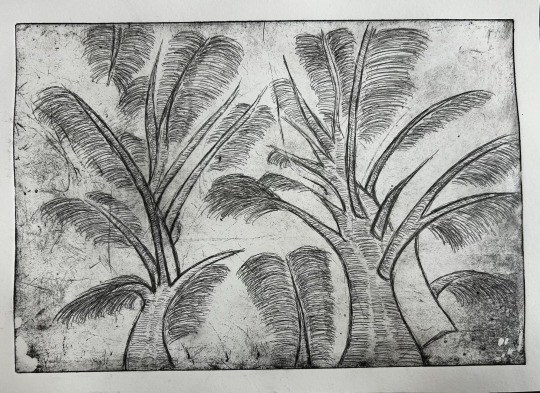
Using three of the drawings I referenced from photos, I translated the designs onto etching plates and had them printed with black ink and then colour gradients.Above are the original black ink prints I made at the start.
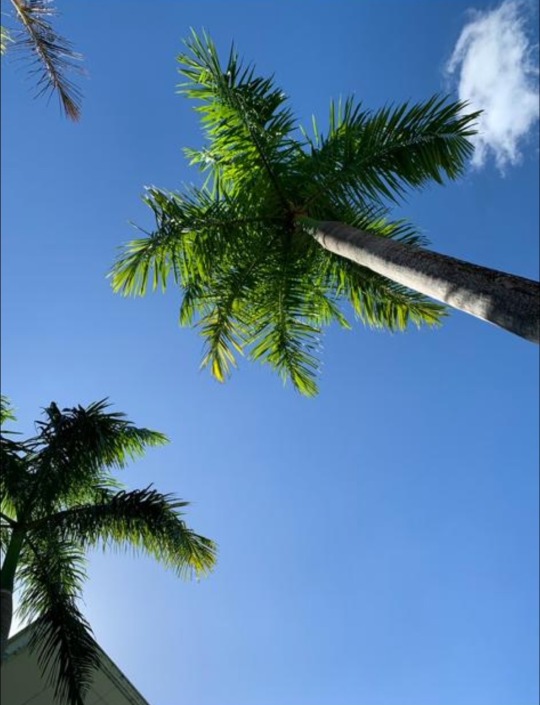
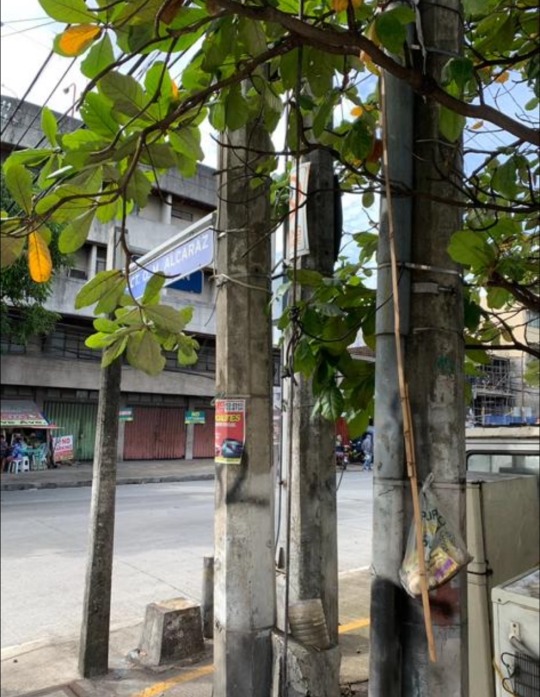

One of the designs is of palm trees pictured from a low perspective, the other being of more palm trees showing closer detailing of the leaves, the trunk and little branches. I remember seeing a lot of these trees in the Philippines, either on the streets or in the scenic islands such as Boracay and Palawan. The third design is referenced from a close-up photo of foliage surrounding a lamppost/pole on the street in Manila, the Filipino capital. Seeing trees on the streets are common in London and it appears as though they're planted in an intentional, decorative manner. However, in the photo, it feels more natural, like it wasn't intentionally that way and it was just left like that. The picture reminds me of how nature can subtley coexistence with manmade things, displaying an effortless aesthetic.
Similar to the Ecology project, I wanted to expand the printmaking to colour mixing and gradients. I personally like my printd better in colour since I enjoy picking out the colour combinations and being more free with where I want the certain colour to show.

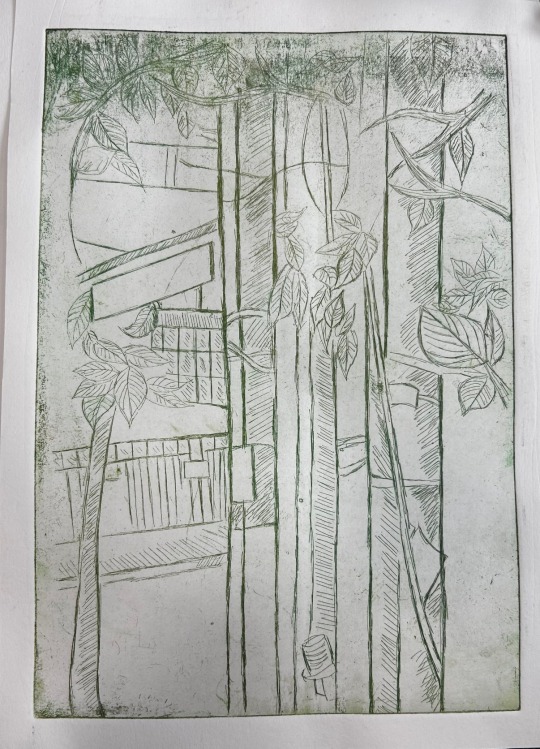
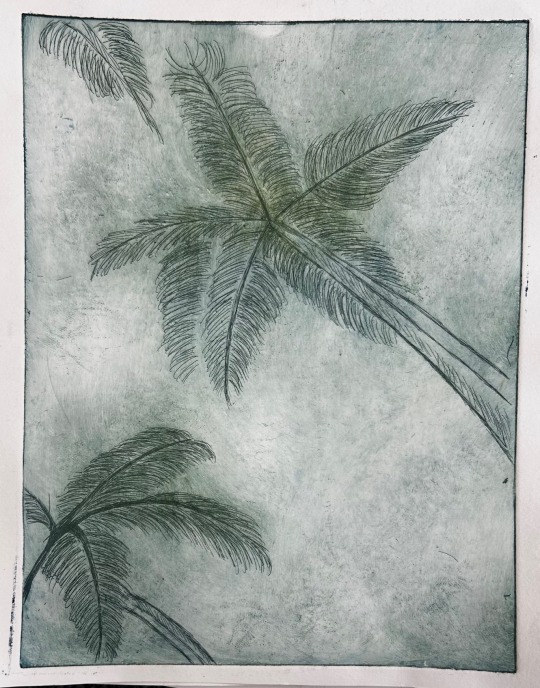
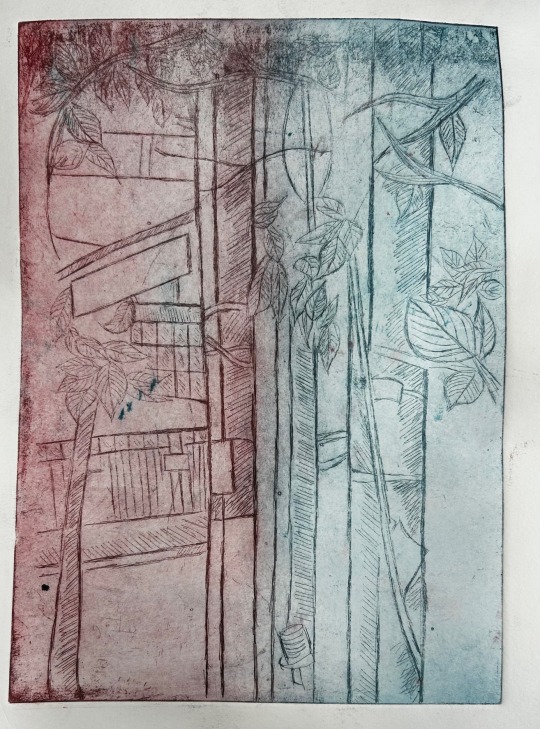



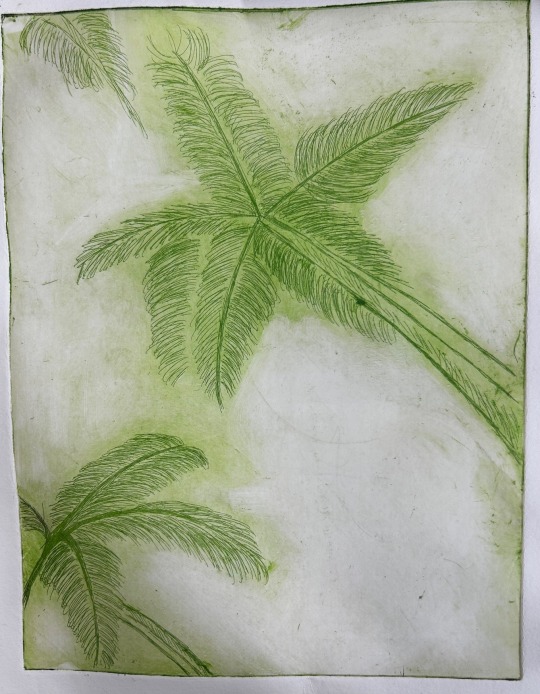
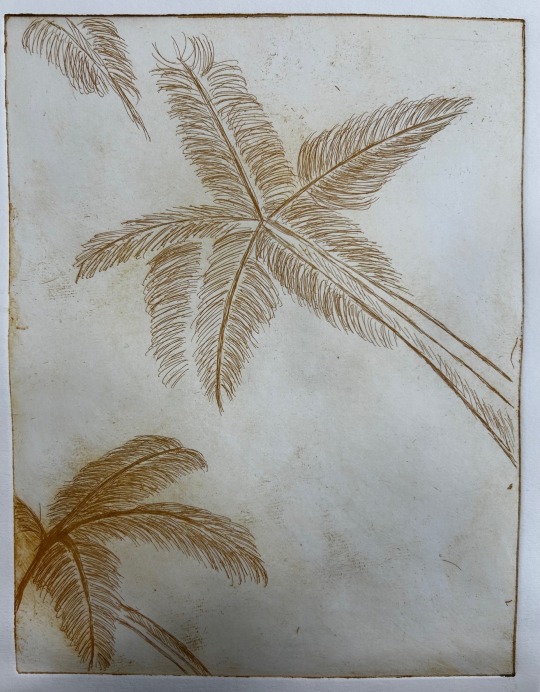
These are the coloured etching prints I liked the outcome of. I did several more prints of other colours as well. I opted to start off with earthy colours to go along with the theme and image, and then went for primary colours. I made sure to make ghost prints each time after the initial print as well.
0 notes
Text
Artist Research
Kuanth



Became a freelance illustrator in 2002.
His “New World” series is inspired by the pandemic outbreak
He imagined a world after a reset - it revives with bizarre-looking plants in all forms and shapes, seemingly menacing but full of hope.
Fernando Amorosolo



Portraitist and painter of rural Philippine landscapes
Nicknamed the “Grand Old Man of Philippine Art”
He was the first ever to be recognised as a National Artist of the Philippines.
He was recognised as such for his “pioneering use of impressionistic technique” (use of lighting and backlighting in his paintings, “significant not only in the development of Philippine art but also in the formation of Filipino notions of self and identity.”
Amorsolo painted during the 1920s-1930s. His work appeared on posters and tourist brochures.
Beginning in the late 1930s, Amorsolo's work was exhibited widely in the Philippines and abroad.
His work appeared on the cover and pages of childrens; textbooks, novels, commerical designs, cartoons and illustrations for Philippine publications such as 'The Independant, Philippine magazine, Telembang, El Renacimiento Filipino, and Excelsior.'
Amorsolo's supporters consider his potrayals of the countryside as "the true reflections of the Filipino soul."
Reference List:
Lansonneur, L (2020) "10 Artists Who Celebrate Nature Through Their Work," The Artling, Available at: 10 Artists Who Celebrate Nature Through Their Work (theartling.com)
Fernando Amorsolo - Wikipedia
0 notes
Text
Research into Text
One of the texts I chose is “Ecological Grief in Filipino Youth” by John Jamir Benzon R. Aruta. The text is written in the form of a letter. The text concerns the issue of ecological grief and how it is a real thing experienced widely among the Filipino youth. This is a psychological response to real losses occurring within natural life in the Philippines. Losses such as: deforestation, wildlife loss and climate change. This is relevant to my work since it’s about Filipino nature, which I’m doing printmaking on.
The text mainly talks about ecological grief, “an emotional and psychological response to losses in the natural world.” It is said to be an “intense feeling of longing and mourning due to ecological damages" and how “humans' natural affiliation with nature explain why ecological losses can have detrimental effects on mental health and well-being.” (Aruta, 2021) It is common among young Filipino people as the country is “most vulnerable to climate hazards,” which brings about the destruction of wildlife and forests, as well as displacing and killing thousands of people, ruining their livelihoods also. Deforestation is also a common issue in the country, “with less than 20% of its original forested areas remaining." Other than issues concerning the land, marine pollution is also a problem. The Philippines is “dubbed a biodiversity hotspot due to its enormous diversity of land and marine species.” However due to illegal wildlife trade and pollution in the water, there has been loss as a result, The text points out how there are “alarming findings on the Filipino youth as the most ecologically grieving population in the world.” (Hickman et al, 2021)
I find this text interesting as it gives insight about how valued the natural environment is to young people in my country, it shows the connection they have with their land, which is exactly the kind of theme I’m going into depth about, especially in regards to the Philippines. It’s apparent that the nature there is a deep part of Filipino identity too, since it’s the peoples' as well as their wildlifes’ home. I also find the term ‘ecological grief’ very interesting, since it’s a new concept to me I haven't heard of before, however it does make a lot of sense. For Filipino youth, “this is a valid response to the actual threats of climate change and other ecological losses they face, as they are future adults who will have to witness the more severe brunt of the climate crisis in the future.”

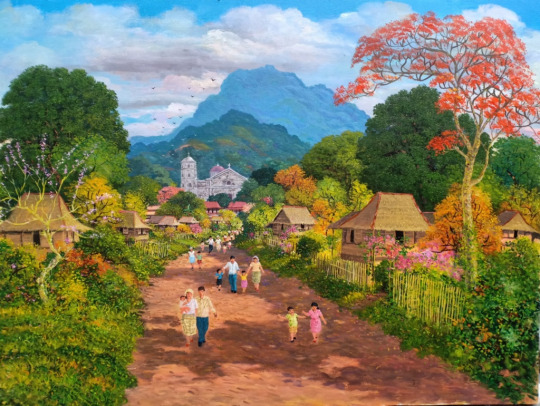

An artist I know of who is relevant to my project is Lino Acasio, a Filipino artist born in Batangas, a province in the Philippines where my dad's side of the family lives. His artwork is beautifully vibrant and really captures the beauty of the natural environment in rural Philippines. Acasio is a landscape artist who had "mourned his muse" shen the Taal Volcano erupted, causing his hometown, Lemery, to become a ghosttown. "My heart melted down when I saw the damage doneby the eruption. The green landscape that I painted is now coloured gray." - Acasio
Acasio began to "immortalise the Batangas' rural scenes" in 1982, "a clear statement of his fixation of the pastoral beauty of the Philippine countryside in the south." "The beautiful landscape of Batangas is the subject. I paint for the love of nature." - Acasio
These creative works are relevant to the text I chose because the artist himsef has experienced 'ecological grief' over the natural losses of nature as a result of a natural disaster. "Acasio could not help but feel devastated as his former muse turned to a dull, almost unrecognisable state under the veil of ash." Acasio was deeply affected by the damage done to the nature of his home, which is telling of his deep emotional connection to nature and the environment in his country.
Reference List:
Jamir, J & Aruta, B. R (2022) “Ecological grief in Filipino Youth” Taylor & Francis Online, Available at: https://www.tandfonline.com/doi/full/10.1080/15325024.2022.2108204
Mortel-Baricaua, C (2020) "The artist who wept when Batangas turned gray," Business Mirror, Available at: The artist who wept when Batangas turned gray | Carla Mortel-Baricaua (businessmirror.com.ph)
Further text I'll look into:
Felicidad, M, Ferido M, Pelegrina, D (N.D) “Connectedness to Nature, Grit and Depression Among Selected Filipino Adolescents,” Available at: https://www.ijmra.in/v5i6/Doc/12.pdf
0 notes
Text
Graphic Media Developent


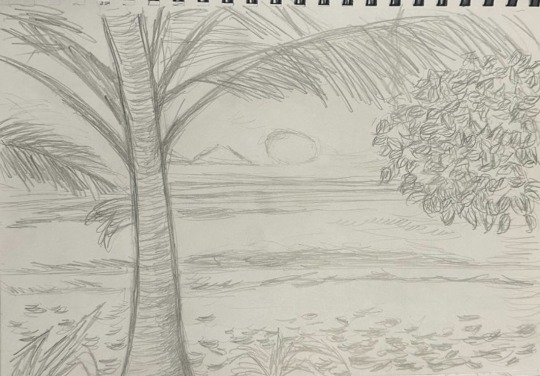



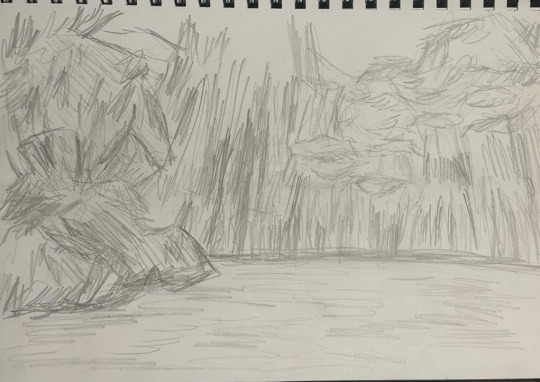
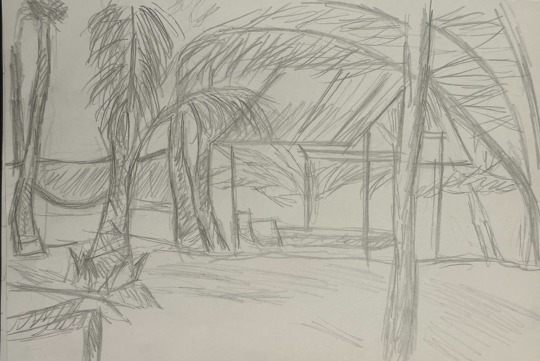

I took reference from old photos on my mother's phone from a trip to Palawan, an island in the Philippines known for its beautifully clear waters, and its abundnce of natural scenery native to the region.
l want to demonstrate Herman Lohe's way of communicating a sense of nostalgia and longing for a certain place while also showcasing the natural beauty and tranquility of scenery in my country.
I will flip these designs and transfer them onto etching plates. Once I prepare the etching plates with two or three designs, I will get them printed all in one session. Or I will have them printed in separate sessions if I have time.
0 notes
Text
Artist Presentation - Herman Lohe

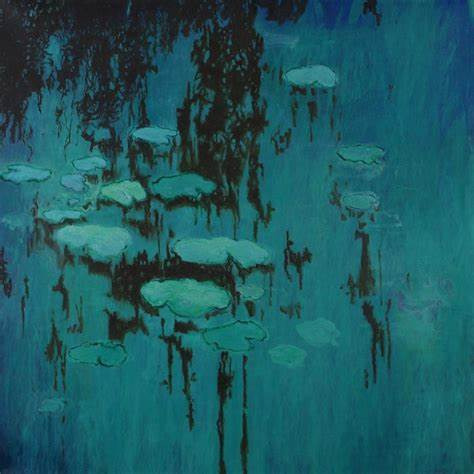


Research:
Aldrige, I (2018) “Our Connection to Nature - An Interview with Artist Herman Lohe,” Fiumano Clase. Available at: https://www.fiumanoclase.com/press/26-our-connection-to-nature-an-interview-with/#:~:text=Herman%20Lohe%20is%20a%20Swedish,own%20relationship%20with%20their%20surroundings.
Herman Lohe is a Swedish multimedia artist/painter that identifies nature as his muse.
His disconcerting yet calming landscapes invite the observer to seek comfort in nature and to ponder their own relationship with their surroundings.
The National Student spoke to Lohe about his personal connection to the natural world, the power of art as a tool of healing, and the unbreakable bond between humans and their environment.
The emotional connection between nature and the body is an important topic of discussion for Lohe.
There is a symbiotic relationship between the viewer and the canvas, creating a sacred experience of emotional exchange.
The artist believes in the positive impact of nature on people, and the power it has to heal the body and mind.
“We have probably all felt it when walking in a forest or sitting by the sea,” he says, “It has a calming effect that clears the mind.” - Lohe
The link between nature and the body has been an important factor in the artist’s personal life too.
“I spent a lot of time in the forest as a child,” Lohe recalls, “playing, exploring and camping. I used to call the forest my very best friend. It still is.”
Lohe’s close bond with his surroundings is echoed in his paintings.
“Most of my work relates to mana and nature and the unbreakable bond between the two.”
The intimacy of this relationship is echoed in the connection between artwork and the painter.
Lohe emphasises the importance of a personal dialogue between the canvas and the paintbrush.
“I think the important thing is that there is communication between the two. This is one of the beauties of art.”
“I also want to be able to really spend time in the wild. There is a certain kind of focus that manifests itself when spending time in the wilderness. A feeling of belonging, that you’re a part of everything around you.”
Longden, L (n. d) “Fiumano Clase: An exploration of light and nature,” scanmagazine, Available at: https://scanmagazine.co.uk/fiumano-clase/
Through a combination of painting and video art, Nordic Tales pays homage to the unique natural beauty of northern Sweden, while also touching on universal themes of joy, sorrow, life and death.
The relationship between humanity and nature, and the power of nature to evoke and resonate, have been dominant themes in Lohe’s work.
His older works are united by the theme of light and reflection.
Lohe compares his art to music in its ability to communicate feelings on a non-verbal level, and much of his work strives to evoke his own emotional connection to nature
“Music is such a powerful art form - when you listen to it you can feel joy, sorrow, excitement, calmness, but seldom would you ask yourself the question ‘why?’ I paint with a similar approach in mind.”
Among the emotions which Lohe explores is a palpable sense of nostalgia and longing, possibly fuelled by the fact that his paintings are often started in the midst of nature itself, and then finished far away in his London studio.
Herman Lohe's work is relevant to my project since his work is inspired by similar themes, the connection of people and their emotions with the natural world. His work "paying homage to the unique natural beauty" of his country is also very similar to how I'm creating artwork while referencing nature in the Philippines.
0 notes
Text
Project 4: Chosen Theme and Project
I decided to further pursue the theme of nature and combine it with identity since I enjoyed these projects the most and was satisfied with their outcomes.
For Identity, I had a box made from scratch and I painted around it. I then made several drawings using references from childhood photos I have and added them into the interior of the box as a collage.
For Nature and Ecology, I made several etching prints in black ink and colour gradients.
With the nature theme, I'm partially taking inspiration from "The Word for World is Forest," as the Athsheans' were described to be spiritually connected to their planet's nature and environment. When I put more research into the human mind's connection with nature, I discovered the term "nature connectedness," which is the "extent to which individuals include nature as part of their identity." (Shultz, P. W, 2002) It also includes "an understanding of nature and everything it is made up of, even the parts that are not pleasing." I was interested by this quote and I'd like to develop this idea further. I believe that this can also be related to people, which is where I can link this to the identity theme.
To expand on the theme of identity, I wanted to express other aspects of my own. Since I first focused on childhood photos and memories for the first project, I want to go further and touch on cultural identity. I might want to expand on my 'family tree' and memories I had being in the Philippines, which is where my family is from. I have memories of the city and the countryside there when I was younger. I might try to explore this more by doing drawings of old pictures I have of my time there. Relating back to the nature aspect, I want to focus on connectivity to nature and its importance, maybe linking it to the environment in the Philippines as well or doing these themes separately with the same graphic media.
I want to approach this project by doing more printmaking, preferably either etching or lino print. I want to be sure to include more detail into my design and experiment more with colour gradients with etching since I'm getting more used to the process.
Reference List:
Shultz, P. W (2002) “Inclusion with nature: The psychology of human-nature relations” Kluwer Academic
0 notes
Text
Nature and Ecology: Graphic Media Printmaking





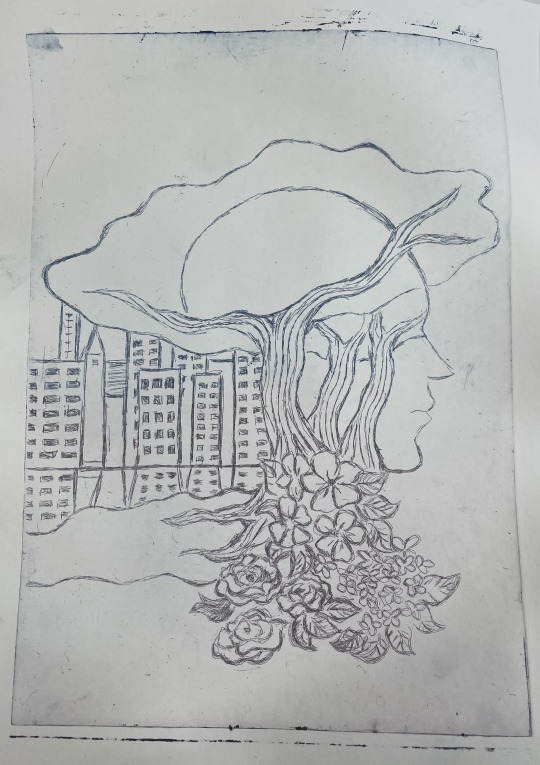




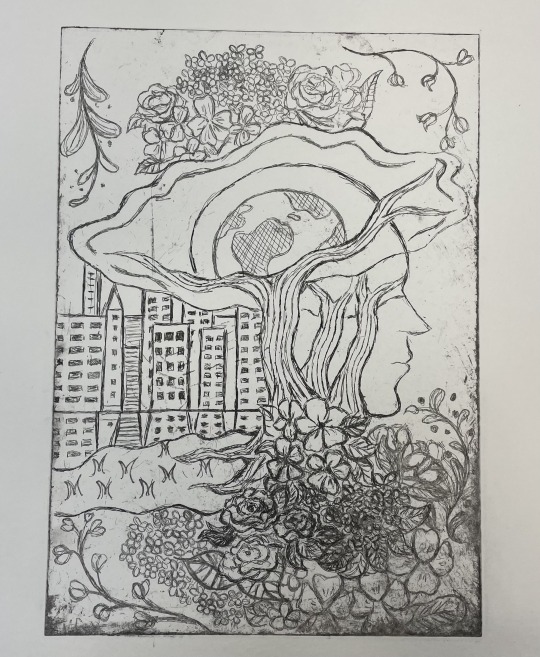
The graphic media response for the topic of Nature and Ecology is printmaking. I decided to do the etching method since I wanted to develop my understanding and skill with the process. My art style tends to be scratchy and fine-lined, so I figured it would be the most suitable for me to try.
For my design, I loosely took inspiration from ‘The Word for World is Forest’ due to its depth into the ecological theme. One aspect of the Athsheans�� that stood out to me was their deep and spiritual connection to nature. I linked this to research I found regarding ‘Nature connectedness,’ the “extent to which individuals include nature as part of their identity.” (Shultz, P. W, 2002) I found that there are three components to make up nature connectedness, the core of it, the "cognitive component" which means “how integrated one feels with nature.” I wanted to portray that in my print design.
I wanted to relate that idea to my prints. I started off with drawing the head of a person with trees sprouting out from within it. This is to represent how nature brimming with life can be connected with the inner mind. How people can surround themselves in a natural environment to feel ‘one with the earth’ and other living things. I drew a cluster of different flowers at the bottom as well to symbolise one’s inner growth and how beautiful it can be. I then drew a city landscape to the side to represent human’s transition to the urban scene and how it is more ‘outside of them,’ meaning less of a connection can be made between the spiritual mind and man-made things. "Mentally we can become disconnected from nature because we're now deeply embedded in a human-made world." (Richardson, 2017) Nonetheless, it’s still a creation of humans. But it’s external rather than internal. I found this observation agreeable and fascinating.
After this project, I feel less wary about printmaking since I was never too sure about the process. I also knew it would be time-consuming as well, but I’m happy to be able to get used to the process and find out it was not as difficult as I once thought it would be. After tracing the design onto the etching plate, I did my first print with black ink and then started experimenting with colours. I was not aware that I could do etching with coloured inks, so I was satisfied with the results, especially when I experimented with gradients. It was a lot more difficult and took more time to clean the plate off after each print though. I still enjoyed the creation process regardless.
After receiving feedback, I added more details to my illustration, adding more flowers and detail to make it look more complete.
Reference List:
Shultz, P. W (2002) “Inclusion with nature: The psychology of human-nature relations” Kluwer Academic
Richardson, M (2017) “Why Our Connection with Nature Matters,” Psychreg, Available at: https://www.psychreg.org/connection-with-nature-matters/
0 notes
Text
The Word for World is Forest Essay
The Word for World is Forest is a science-fiction novella written by American author Ursula K. Le Guin in 1972. The book takes place on a planet called Athshe, which is named ‘New Tahiti’ by the Terrans (humans) colonising the planet. The story mainly focuses on the strained relationship and conflict between the Terrans and the inhabitants of Athshe who are native to the land. There is an apparent power imbalance between the two species as presented through the Athsheans treatment. For example, their imposed roles of ‘voluntary’ labour put on them and their enslavement to serve the humans. They are shown to also be addressed with the seemingly derogatory term, “creechies” - which sounds close to “creatures,” strongly suggesting that the humans don’t even see them as people. The story focuses on how the Athsheans come to resist and fight back against the Terrans to get their rights and home back. “The plot of this concise story revolves around the Athsheans’ resistance and its ramifications for their culture.” (Guynes, 2020)
The planet Athshe is described to be “paradise, a lush wooded planet.” Wood has become incredibly rare on Terra, which has become an urban desert, thus leading to the Terran’s invasion on the planet in order to take these resources for themselves. Athsheans’ are described to be “environmentally minded” and “intricately connected to their lands and they prioritise caring for the environment.” (Stiltner, 2023) However, the Terrans are treating their home like a “lumber yard” and have established a “military-controlled logging enterprise that severely damages Athshean ecology.” This situation calls attention to what is occurring in real life, with there being a biodiversity crisis that was caused by the “appropriation, colonisation, and intensified use of lands previously managed sustainably.” (phys.org, 2021) An example to the interference with Athshe’s biodiversity is the pointless hunting of red deer by men, despite there being a law against doing so, further showing the humans’ entitlement.
A 2021 study from the Proceedings of the National Academy of Sciences, supports the argument that the “essential way to end the Earth’s current biodiversity crisis is to empower stewardship of indigenous people,” With control over the land being seized from Athsheans’, their home will naturally fall victim to the same barren likeness of Earth. The ecological aspect of the story thoroughly supports Le Guin’s defence for the rights of indigenous communities and demonstrating ecological issues. The novella’s science-fiction genre is proven effective and is a “powerful medium to express environmental concerns.” (Sneharika, 2023) Furthermore, in regards to the title of the book itself, ‘The Word for World is Forest.’ For the Athsheans’ their entire world is a natural forest, whereas for humans, home is manmade and is created through the eradication of flourishing ecosystems.
Other compelling themes of the story were heavily influenced by Le Guin’s view on anti-colonisation, anti-militarism, pacifism, and resistance. The novella “emerged as a reaction to the Vietnam War, which ravaged human and non-human lifeworlds.” (Sneharika, 2023) It provides deep introspection into human nature and their actions. “Le Guin offers two competing discursive systems to interpret human and nonhuman alterity.” For example, “Terran industrial capitalism grounded in physical and symbolic violence,” shown through the behaviour of Don Davidson, “and Athshean ecosocialism, rooted in an ethics of non-violence and forest-centred nominalism.” Le Guin had pointed out the cruelty of colonialism and imperialism, and have characterised the colonised as pacifistic, peaceful people to emphasise the extent of humans’ needless cruelty. In the end, the Athshean’s resorted to uncharacteristic violence in order to “preserve their culture, homeland and autonomy.” (Stiltner, (2023)
Le Guin intended to highlight the “worst aspects of a human life: a god-hero complex driven by greed, racism, and self-assured superiority over all life.” This personality is shown through the character Don Davidson, a Terran army captain. He embodies all these unpleasant traits as seen by his evident disdain towards the Athsheans’, showing belief in his superiority and dominion over them. Davidson is described as a “white supremacist, assured of his moral servitude, convinced he has both the right and duty to murder creechies.” The whole story embodies the anti-war perspective, which is prominent in science-fiction. “The list of anti-wart writers includes those profoundly hostile to technocracy, militarism, and imperialism.” (H.Bruce Franklin, 1990)) During the Vietnam War, the SF genre was used in its form to present arguments about it. In the novella, the Terrans are meant to represent the US leaders of the Vietnam War, “possessed by fantasies of themselves as rational, civilised, self-controlled, superior beings, wielding irresistible technologies that make them masters of all other life forms.” (p.352)
Despite being written in the 1980s, these issues are still relevant today for people to learn and reflect on behaviours had towards other people and our environment. I feel like this book interestingly brings a narrative to these problems and creates an immersive setting to present how unfair the world can be. For my printmaking project, I wanted to convey humankinds’ connection to nature in comparison to the urban scene. I was inspired by how interlinked Athsheans’ are with their land compared to the Terrans’. Therefore, I printed an illustration representing humanity’s ‘oneness’ and ‘connection’ to living nature.
Reference List:
Guynes, S (2020) ‘The Word for World Is Forest: Ecology, Colonialism, and the Protest Movement,’ TOR.COM, Available at: The Word for World Is Forest: Ecology, Colonialism, and the Protest Movement | Tor.com
Stiltner, N (2023) ‘Themes,’ enotes.com, Available at: The Word for World Is Forest Themes - eNotes.com
Sneharika, R (2023) “Capitalism, Ecosocialism and Reparative Readers in Ursula Le Guin’s The word for World Is Forest,” MDPI, Available at: Literature | Free Full-Text | Capitalism, Ecosocialism and Reparative Readers in Ursula Le Guin’s The Word for World Is Forest (mdpi.com
H.Bruce Franklin (1990) The Vietnam War as American Science Fiction and Fantasy (La guerre du Viet-Nam en tant que science-fiction et fantaisie américaines) on JSTOR
N.A (2021) People have shaped Earth's ecology for at least 12,000 years, mostly sustainably (phys.org)
0 notes
Text
Modernity Project - Derive and Psychogeography
For my graphic media project, I wanted to make my own approach to the concept of Derive and Psychogeography. I’ve learned a lot more about this subject while researching for my essay. The theory of these terms introduced by Guy Debord, in which he states that the derive is “a mode of experimental behaviour linked to the conditions of urban society, a technique of rapid passage through varied ambiances.” (Debord, 1956) I wanted to present my interpretation of this by documenting myself through “varied ambiences” myself. To demonstrate this, I took photos and short videos of my surroundings when I’m walking around various places in the city.
I’ve read that derives are important for the Situationist theory “because of all the increasingly predictable and monotonous experience of everyday life in advanced capitalism.” (Debord, 1956) I find myself agreeing with this. I find myself noticing the changes of areas I’m familiar with, how obvious the contrast is, yet how mundane these changes have become with how it has become a part of everyday life. People usually travel with a destination in mind, they don’t usually stop or at least open up their senses to what’s surrounding them, nor do they observe details as keenly as if someone were to go on a derive. I found this subject very interesting as this is similar to what I tend to do a lot when I’m outdoors, especially in the city.
For my project, I made a documentary style video, in which I edited several videos I’ve taken on my phone together. I added a narration of the history of the places shown as well, to demonstrate that these areas have significance, importance and history. That there’s more to a place than simply being a place to be.
Reference List:
(Debord, G (1956) ‘Theory of The Derive, Les Levres Nues) (9)
(Debord, Guy (1983) ‘Society of the Spectacle, U.S, Black & Red)
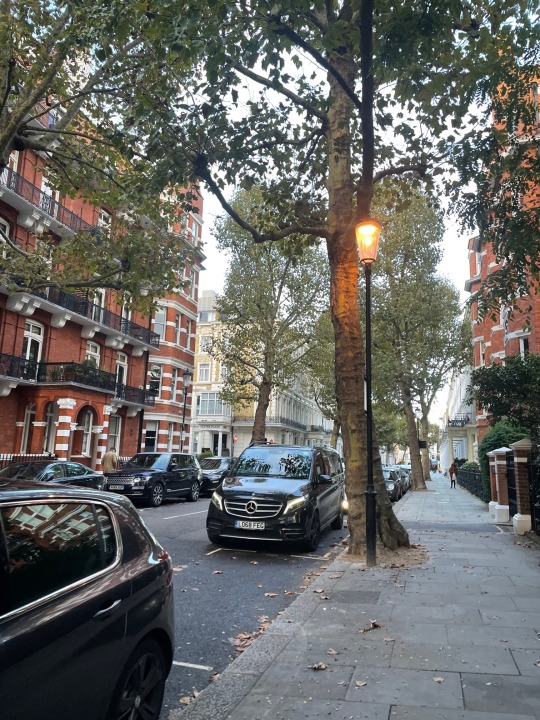
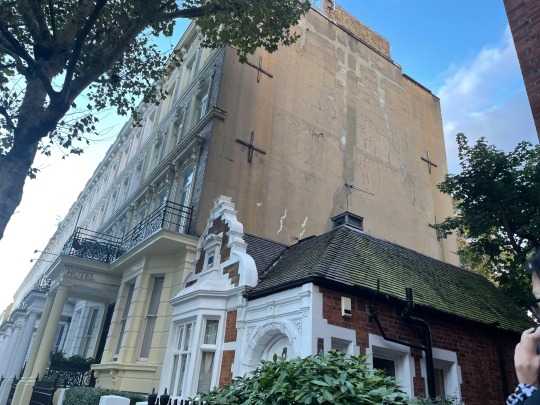

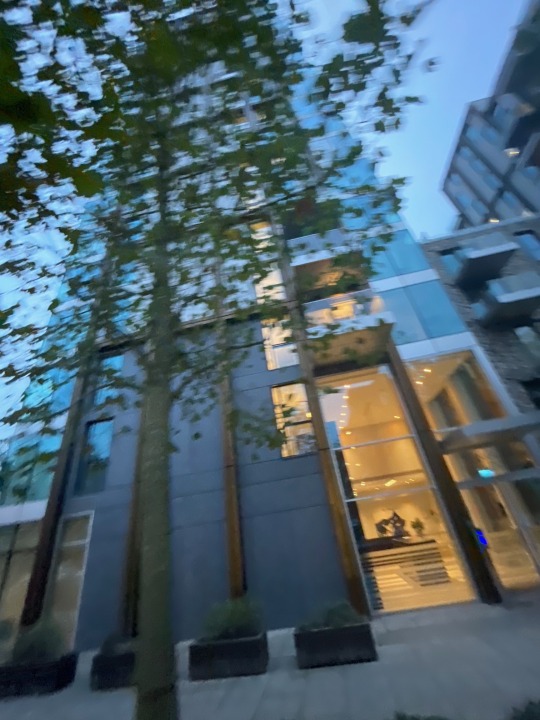
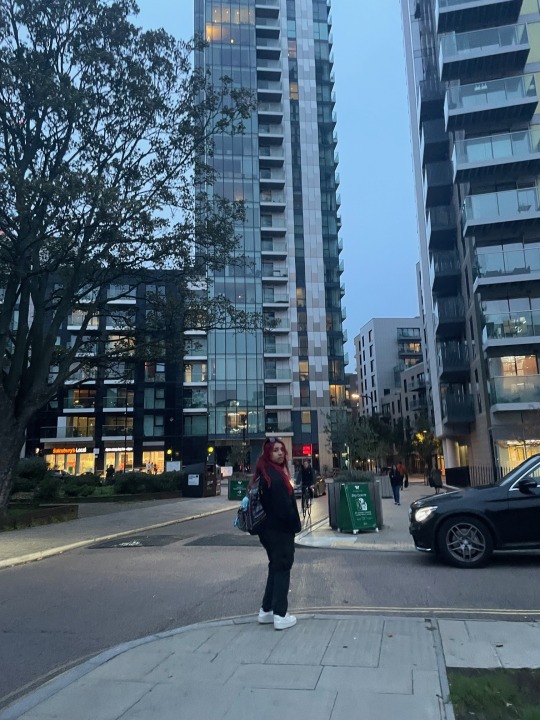




0 notes
Text
Research into Modernity Concept/Issue
Derive and Psychogeography
I chose to write on the concept of ‘Derive’ and ‘Psychogeography.’ Derive is the French word for ‘drift,’ meaning to make an “unplanned journey through a landscape.” (McDonough, 2004) This is usually done in an urban setting. Participants of the derive usually don’t focus on the direction in which they’re going or their destination. They “stop focusing on their everyday relations to their social environment.” Derive is linked with “psychogeography,’ which involves the observation of a city’s terrain and how geographical location can affect ‘the emotion and behaviour of individuals.” (Tate, n.d.) It is described as “the intersection of psychology and geography” and how “psychological experiences of the city illuminates forgotten aspects of the human environment.” (Lyons, 2017)
The Derive was an idea developed by the Letterist International, a group of radical artists that were prominent in the 1950s. Guy Debord was the member who publicly introduced the concept in his book ‘Theory of the Derive’ which was written in 1956. Writer and psychogeogrpaher Wilfried Hou Je Bek wrote “psychogeography is the fact that you have an opinion about a space the moment you step into it.” (O’Rourke, 2021) Psychogeographers “advocate the art of becoming lost in the city” which is done through the derive.
This concept is linked to Modernity because in derives, people can observe changes in cities as they are always changing. New buildings are being built or gentrified. In relation to the derive and its link with modernity, there is the relevant term called The ‘Flaneur.’ This is another French word for ‘stroller’ or ‘wanderer’. ‘Flaneur’ is represented as a man and is an “ambivalent figure of urban affluence and modernity.” This depicts the ability to wander around detached from society, the only purpose is to be an “acute observer of industrialised, contemporary life.” According to Bijan Stephen in his 2013 Paris Review article, Bijan Stephen had stated that the use of the Flaneur “is a vehicle for the examination of the conditions of modernity.” (Stephen, 2013)
This concept interests me because I also like to observe my surroundings when I’m outdoors. I always connect to my senses and let myself feel when I’m walking through the city, especially in the evenings where the ambience feels stronger. For my project, I’m personally going on derives in places in the city I find myself in and recording it in videos and photography.
An example of this topic in visual culture is Dustin Yellin's series called 'Psychogeographies.' This series is a collection of "fantastical colages encased within layers of glass." (Mitchell, 2015) They are presented uniquely in life-size humanoid figures. They are pieced together with drawings, paintings and magazine clippings that are stacked between glass planes. Psychogeography is described to be a "toy-box full of inventive stategies for exploring cities." (Waldman, 2014) For Yellin, his toy box is "full of everything he finds on the street - flowers, leaves, bugs, and even dead rats," which he also uses for his thee-dimensional collages sealed in resin.
Reference List
Lyons, S (2017) ‘Psychogeography: a way to delve into the soul of a city’. The conversation, Available at: Psychogeography: a way to delve into the soul of a city (theconversation.com)
Mcdonough, T (2004) ‘Guy Debord and the Situationist International: Texts and Documents, Boston, October Press
Mitchell, K (2015) 'Three Dimensrional Human Collages Encased in Layers of Glass', My Modern Met, Available at: Three-Dimensional Human Collages Encased in Layers of Glass (mymodernmet.com)
O’Rourke, K (2021) ‘Psychogeography: A Purposeful Drift Through the City,’ The Mit Press Reader
Stephen, B (2013) ‘In Praise of the Flaneur’, The Paris Review
Tate, (n.d.) ‘Art Term: Psychogeography, Tate) Available at:: Psychogeography | Tate
Walman, J (2014) 'Psychogeographies: 3D Collages Encased in Layers of Glass by Dustin Yellin' Colossal, Available at: Psychogeographies: 3D Collages Encased in Layers of Glass by Dustin Yellin — Colossal (thisiscolossal.com)
0 notes
Text
Reading Report 2 - Modernity
Savage Messiah - Laura Oldfield (Grace) Ford, Introduction: 'Always Yearning for the Time That Just Eluded Us'
For the second reading, I read the introduction to Laura Oldfield Ford’s book ‘Savage Messiah,’ which was self-published in the early 2000s. Her writing regards the gentrification and changes that London has undergone over the decades. The key concept she introduced is the revolutionary technique called ‘derive’, in which a person moves through a city or public space aimlessly with no specific direction or real destination in mind. What makes the text really interesting is it is written in a diarsistic manner, which Ford specifies in the beginning. It is a personal recall of her walks through the city and includes detailed and in depth description of different areas in London.
Ford herself states that the “city can be read as a palimpsest, of layers of erasure and overwriting.” (p.1) A fascinating analogy, explaining how the city itself can be ‘written over’ and altered with ‘traces of the old still remaining/’ This can be exemplified through Ford’s reminiscing of places that have changed. For example, her description of the Northern outfall, she described walking along it ‘is a melancholy experience’ and described it as “the phantom of an invented, slickly choreographed future haunts the landscape.” (p.8) Her description is applicable to gentrification in general, since old areas that have been reworked/reconstructed gradually look very deliberately more presentable and brand new, but at the same time, can also appear slightly tasteless sometimes.
What I find interesting about this writing is the way Ford presented her writing. Some of her pages are decorated in the form of a zine, with photographs and handwritten quotes and drawings of her own. I may take inspiration from this for my project. Additionally, this reading is relevant to me because there are several places mentioned that are very close to where I live and grew up. I find Ford’s recalling of the change in these areas such as Stratford relatable as I remember seeing these changes myself over the years. Overall, Ford’s way of writing is very engaging, it was a fun and insightful read.
1 note
·
View note
Text
Reading Report 1 - Modernity
Wanderlust, A History of Walking, Chapter 14, Walking After Midnight: Women, Sex, Public Space
I read an extract from Rebecca Solnit’s ‘Wanderlust, A History of Walking.’ This interesting reading talks about women’s lack of freedom in regards to their sexualities and the unjust laws imposed on them.
The first concept Solnit introduced is the term “walking out”, which was ‘an established part of courtship’ (p,231) around the 1800s. Solnit went into detail the importance of this tradition for the building of romance, however to contrast this, she then goes into detail how this seemingly innocent passtime for couples had been turned around to be used very differently and less favourably. In Britain ‘the term “walking out together” sometimes meant something explicitly sexual.’ Solnit exemplifies this concept by recounting an incident that happened with a woman named Caroline Wryburgh, a nineteen year old woman who was seen walking outside with a soldier. Because of this, she had been apprehended by a police inspector against her will on suspicion of ‘being a prostitute.’ (p.233)
Solnit explicitly highlights the sheer imbalance of equality with women and men in regards to freedom with their sexualities and their appearances in public spaces. She goes into graphic detail of Wryburgh’s undeserved punishment and then makes a point to contrast it to the soldier’s lack of consequences. “Being born a woman is an awful tragedy.” Solnit refers to words from American poet Sylvia Plath. She also mentioned another incident, “The Central Park Jogger Case,” (p.243) that further presents women’s injustice. This provides more impact with Solnit’s observations.
There are also references to relevant topics such as women in Ancient Greece and the suffragette movement that began in the 19th century. The text is very informative and the issues it talks about, as a woman myself, is crucial for me to remember. This reading is relevant to the module as it concerns the development of women’s place and role in society over the many years leading up to the present.
0 notes
Text
Box of Me



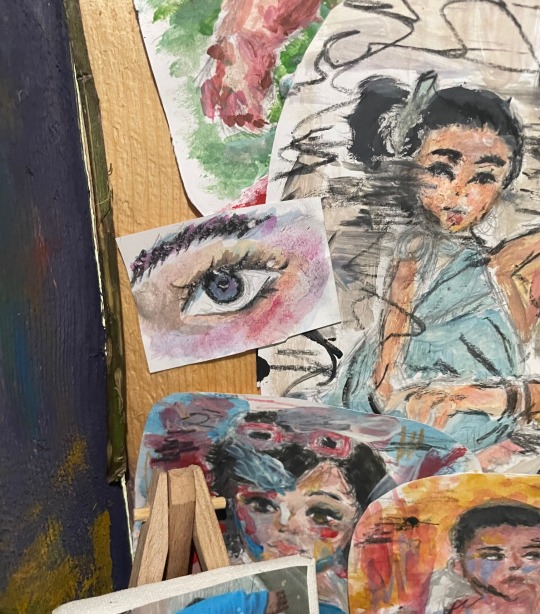

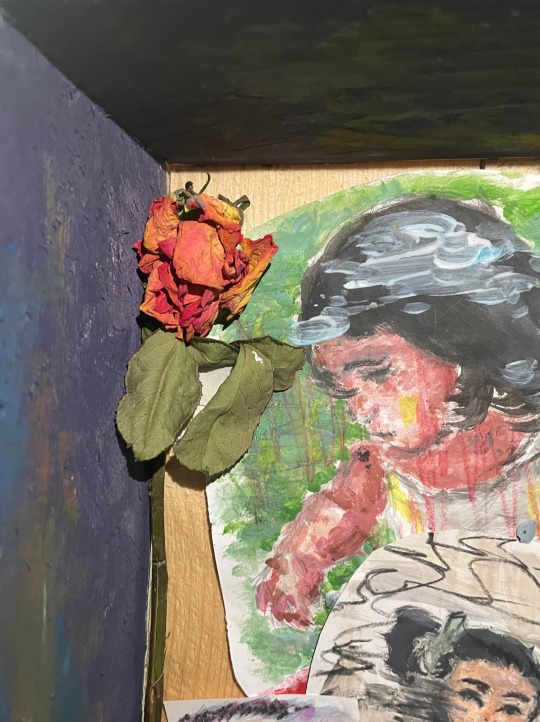
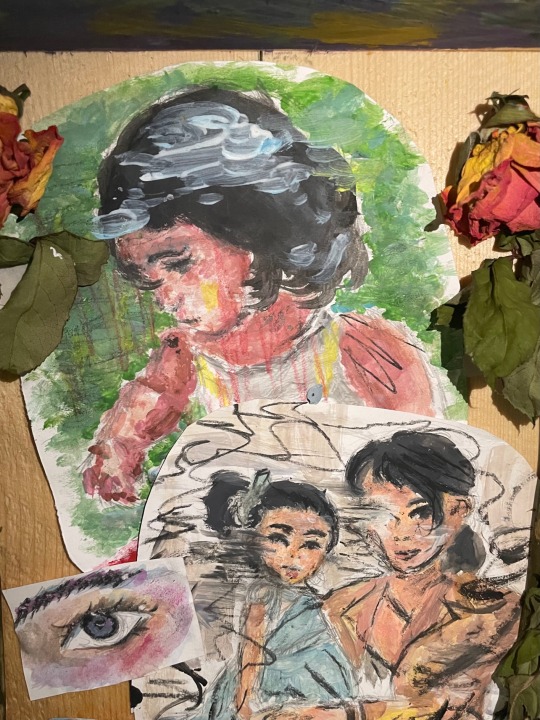

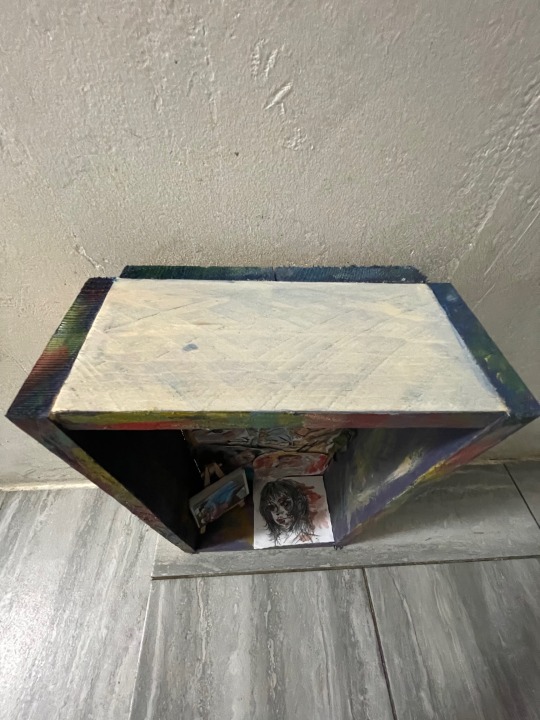


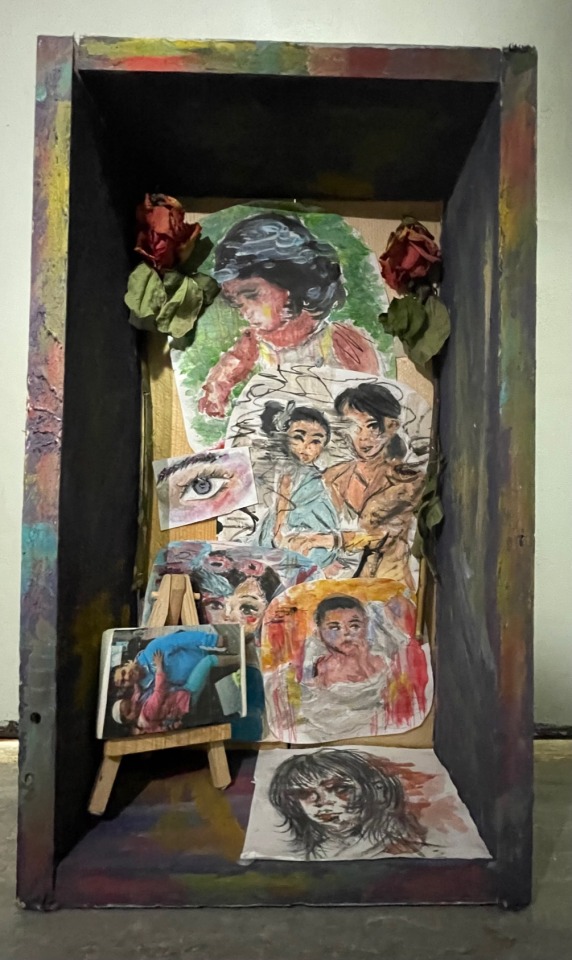
For my ‘box of me’ project, I wanted to derive inspiration from Jenny Saville for my chosen theme of family, childhood and memories. Personally, when it comes to identity, one of the things that resonates with me the most is life experiences - which I believe really shapes a person and how they come to feel, act and identify themselves.
I wanted to integrate Jenny Saville’s interest in the human figure and her visual technique into my work. One of the prominent themes of her work is the exploration of the human condition. With this, I wanted to relate that to my idea of childhood, where my human condition, both physically and mentally was drastically different. I presented that through a collage of paintings of my childhood pictures, which were done in a style similar to Saville, with the manner of application of paint and the vibrant use of colours.
My intention with my project is to reminisce about the past, where I was only a newborn baby/child who didn’t have thoughts, a conscience, or barely any experience with life - essentially before I had more to my identity than just my name and my family. With Saville’s work, ‘her subjects are often depicted in states of physical and emotional vulnerability.’ (Hicks, 2023) While as an adult, vulnerability is still expressed in both ways, a child on the other hand can’t help it. I wanted to visually exemplify this statement through art of myself as a newborn and a toddler. At the bottom of the box, a portrait of present me in charcoal contrasts with the colours of my childhood. It’s meant to generally represent the ‘relationship between the physical body and the psyche,’ which Saville also explores, where as an individual grows up, they also change internally.
Hicks, A (2023) 'What is Jenny Saville's Art Style?', Wayne Arthur Gallery, Available at: https://www.waynearthurgallery.com/what-is-jenny-savilles-art-style/#:~:text=Her%20subjects%20are%20often%20depicted%20in%20states%20of,relationship%20to%20social%20and%20cultural%20constructs%20of%20femininity.
0 notes
Text
Artist Research - Jenny Saville
Jenny Saville is a British contemporary painter known for her artwork that primarily explores themes of identity, sexuality and the human condition (Hicks, 2023) Her work mainly depicts the human form, painted with heavy layers of oil paint that resembles skin pigment not just through tones but in texture. Saville’s brushwork technique involves smearing and scraping layers of oil paint over large canvases. She works and lives in Oxford after studying in the Glasgow school of Art from 1988 to 1992.
Saville is part of the ‘Young British Artist Movement,’ a group of artists that rose to prominence in the 1980s. (Gagosian) Other known artists who are members are Damien Hirst, Tracey Emin and Garry Hume, whose works are known for calling attention to profound topics. ‘Artistic consensus of the Young British Artist Movement was a common will to provoke.’ (Karg, 2020) The YBA’s positioned themselves politically, exemplifying that through what they produced and how they marketed it. They demonstrated their standpoint within conservative society and within the art world in the 80s and 90s.
Saville’s way of exhibiting her work within the movement is through her large interest in confrontational figure painting. She challenges society’s perception of the human body and its potential. ‘Her work reveals deep awareness, intellectual and sensory, of how the body has been represented over time and across cultures.’ (Gagosian) For example, she derives inspiration from Hindu sculptures, Renaissance drawings and paintings.
In relation to identity, Saville ‘deconstructs the stereotypes of beauty/eroticis of the female body.’ (Cue, 2016) She explores the ‘relationship between the physical body and psyche.’ Which are significant attributes to identity since physicality as well as mentality vary uniquely in everyone. Saville herself stated in Cue’s interview, that her art is ‘about human identity.’ The way Saville handles paint ‘seems to evoke this transformative process. The body as something mysterious, fluid and hidden.’ (Saville, 2018, p.20) ‘What strikes Saville is the ease with which identities can be changed, how mutable human identity is - that we all have multiple selves.’
Saville’s work relates to gender distinction and representing identity. In societal perception, women are commonly perceived for what’s on the surface, however Saville expresses the ‘states that bind us to our existence, uneasy, anguished, painful, fleshiness.’ (Cue, 2016) She represents identity through the human experience.
Saville’s work is relevant to my project as her concept relates to experiences in life and how it shapes a person, in terms of physicality and their inner self. I chose this idea since I’m focusing on growth from childhood and changes of the body and self in developmental stages of growth.
Reference List:
Cue, E (2016) Interview with Jenny Saville, Alejandra De Argos, Available at: https://www.alejandradeargos.com/index.php/en/all-articles/21-guests-with-art/576-interview-with-jenny-saville
Available at: https://gagosian.com/artists/jenny-saville/#:~:text=In%20her%20depictions%20of%20the,mobile%20life%20of%20its%20own.
Hicks, A (2023) ‘What is Jenny Saville’s Art Style?’ WaynearthurGallery, Available at: https://www.alejandradeargos.com/index.php/en/all-articles/21-guests-with-art/576-interview-with-jenny-saville
Jenny Saville: A Cyclical Rhythm of Emergent Forms | Essay | Gagosian Quarterly not used
Karg, A (2020) ‘8 Famous Artworks From The Young British Artist Movement (YBA) Available at: https://www.thecollector.com/young-british-artist/
Saville, J (2018) Jenny Saville, London, Rizzoli International Publications
0 notes
Text
Reading Report - Identity
Diaspora Aesthetics: Exploring the African Diaspora in the works of Aaron Douglas. Jacob Lawrence and Jean-Michel Basquiat
I read Sieglinde Lemke’s text on ‘Diaspora Aesthetics.’ In the article, Lemke examines how the diasporic experience could visually affect the artwork of African artists. Diaspora is the re/dis-location of a community. The subject concerns home, origins and cultural background, which is an essential attribute to identity. The writing concerns how the racial/cultural identity of a group brings about their experiences and treatment in their lives. It considers how one’s remembrance of these events can be represented visually in creative media.
The key concepts and ideas Lemke touches on is ‘diaspora aesthetics’ and its merging with visual culture. Lemke questions if the subject matter of ‘diasporic art’ could ‘invariably reflect the traumatic events that precede a forced dispersal,’ (p.123) or if it ‘captures nostalgic yearnings for lost origins’. She exemplifies this in her writing by naming paintings or portraits such as Dorothea Lange’s ‘Migrant Mother’ taken in 1936. Lemke also mentions a concept in the form of a homonymic pun, 'roots/routes' and riot. These are crucial aspects of diaspora that she explains in detail.
In this reading, Lemke argues that ‘diaspora art depicts the act/consequence of forced/voluntary dispersal.’ It expresses a ‘longing for home’ and how creation of this genre constructs a ‘collective identity.’ It’s a strong evaluation, as Lemke exemplifies this through examining the work of African artists who went through the diasporic experience.
What’s interesting is how Lemke wrote engaging descriptions on the art of her chosen artists. She includes the potential gaze of spectator’s too to expand on perspective. Lemke is also evidently well-versed on the subject matter, making several references to other people's critical assessments on diasporic studies.
This reading is relevant to me because I believe art can be used as an outlet for feelings, thoughts, as well as being used to document experiences. Art in itself is an expression of identity that communicates an artist’s individuality and sense of community.
1 note
·
View note